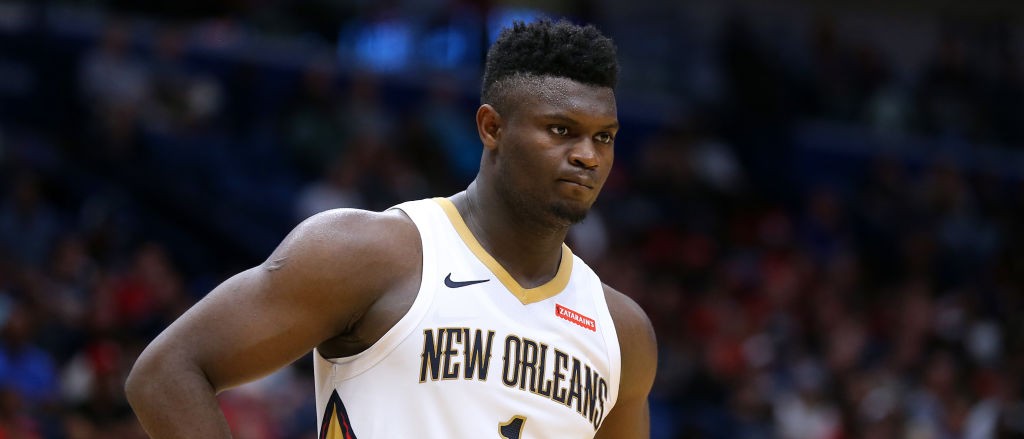Zion Williamson is expected to make his regular season debut for the New Orleans Pelicans next Wednesday on January 22 when they host the Spurs.
It will be a momentous occasion, as Williamson was as hyped a prospect as we’ve seen coming out of college in years and his preseason performance did nothing but further build the expectations for his rookie season. Unfortunately, a meniscus tear has sidelined Zion since the end of the preseason, as he’s spent the past three months recovering and rehabbing from surgery.
His rehab hasn’t been simply about getting strength and comfort back in his knee, but has been focused on his biomechanics and working to teach him how to walk, run, jump, and just generally move with better functionality to hopefully prevent future injuries. ESPN’s Baxter Holmes detailed the work the Pelicans are doing with Williamson to work, specifically, on ankle and hip flexibility that will allow him to move better, get lower to the ground, and just generally be more fluid. The story also touches on why Williamson presents such a unique challenge to the Pelicans trainers given his immense size and unbelievable physical gifts.
There’s an excellent story of the sports scientists at P3 marveling at a high school Williamson creating the most force they’d ever recorded, but the best anecdote came from Pelicans executive vice president David Griffin. Griffin referenced how in the one week they did heavy weight work in the offseason, Zion managed to add eight pounds of muscle to his body, illustrating how he’s a physical specimen like no other.
Then Griffin shares another story about Williamson — how the Pelicans engaged in a teamwide heavy weightlifting routine for just one week during the offseason. Williamson gained eight pounds of muscle during that span, a degree of weight gain that shocked staffers.
“He’s not normal,” Griffin says. “So finding stasis with Zion is the challenge, because he’s 19 years old. He’s still growing. It’s not going to be about a number. It’s going to be about metrics of flexibility and strength and control and all of the different things that we can measure that really are outside of weight.”
And it’s here that Griffin’s constant insistence that Williamson’s weight doesn’t matter to them starts to make more sense. Williamson, at 285 pounds, is gigantic, but the key is for him to be able to bend and move properly, whether he does that at 250, 285, or 300 pounds isn’t of particular relevance. Now, they may find that there’s a place where he does that best, but for now their focus is on opening up his hips to allow him to get lower and move better laterally, without placing that stress on his knees and ankles.
Holmes references Dr. Mike Clark in the story, who now runs Fusionetics and was a long time physical therapist with the Suns, and how he refers to young athletes who are extremely gifted athletically but don’t move properly as having Ferrari engines with basic brakes. Having recently sat in on a panel with Dr. Clark, he explained how the Suns did similar work in this area with Grant Hill when Hill was on the Suns.
When Hill arrived in Phoenix after dealing with a number of lower leg injuries in Orlando, Clark and the Suns staff realized that many of his issues with his ankle derived from a hip injury he suffered early in his career, and by working on his hip flexibility and movement, Hill was able to avoid further injury issues. The hope in New Orleans is that what they’re doing with Zion can have a similar impact, but on a greater scale, earlier in his career, rather than being towards the end of a career like Hill’s.







